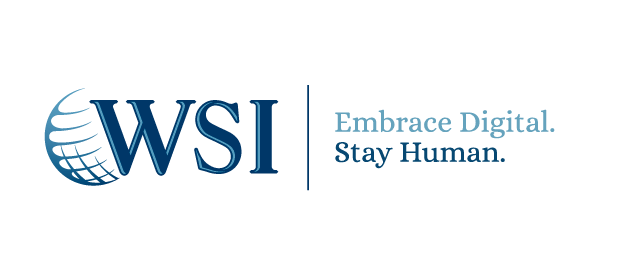Your digital marketing strategies are based on various factors, including your business, your target market, keywords, and whatever KPIs you feel are relevant to your business's growth and prosperity.
One factor that far too many companies overlook is web accessibility. According to the Bureau of Internet Accessibility, 96.8% of the top 1 million homepages reviewed in 2022 had detectable accessibility errors if they had any accessibility optimizations. Since then, there has been some improvement—but lots of work still needs to be done.
Accessibility Checker analyzed 63,000 websites in 2024 and found that 88% were not compliant with the latest web accessibility standards. What is the outlook for web accessibility in 2025—and why should you, as a business owner and marketer, make it a priority?
Understanding Web Accessibility
Let's start by clarifying what we mean by web accessibility. Web accessibility is a set of practices aimed at making websites usable and accessible for people of all abilities. It seeks to ensure that people with visual, auditory, physical, speech, cognitive, or neurological impairments can access a site just as easily as people without these issues.
By focusing on web accessibility, companies can ensure they are not inadvertently excluding a sizeable audience from their efforts. However, accessible websites also benefit the rest of the population, as accessible websites are generally easier to use, load faster, and offer a more satisfying and undemanding user experience.
Web accessibility is achieved in several ways:
- Good use of images, together with detailed text descriptions to go with them
- Using clear, simple language
- Offering transcripts for audio material
- Making it easy to navigate between pages
- Using Accessible Rich Internet Applications (ARIA)
The Business Case for Web Accessibility
Web accessibility is essential from a humanitarian perspective, but it is just as indispensable from a business point of view. Making your website accessible to people with impairments is not just a nice, added extra, or legal responsibility. On the contrary, it is a wise business move that will expand your market and help your company grow.
Accessibility measures can help you attract more customers to your site, boost your brand's reputation, and drive innovation.
By failing to make your website accessible, you could exclude a sizeable market segment. According to Purple, an organization dedicated to the issue of web accessibility, companies lose approximately $2.5B per month by ignoring the needs of people with disabilities. The organization's findings indicate that around 73% of customers with disabilities experience difficulties on more than a quarter of the websites they visit. It also estimates that around 4.3M shoppers click away from inaccessible websites—a loss of $14.8B to online retailers.
If these figures are accurate, thousands of businesses unnecessarily lose considerable custom and income just by running inaccessible websites. If you knew you could boost your sales revenue substantially by applying accessibility measures to your site, wouldn't you choose to do so? According to W3.org, another leading web accessibility expert, at least one billion people—15% of the global population—have a recognized disability. As the population ages, this percentage grows. This translates to an extended market of 2.3 billion people with $6.9 trillion in annual disposable income.
Web Accessibility Best Practices
Now that you know that web accessibility is a moral and legal responsibility and good for business, how do you make it a reality? Here are nine best practices to make your website more welcoming for people of all abilities.
- ARIA Roles: ARIA roles make web content more accessible. This technical specification is designed to make web content and applications more accessible to people with disabilities. It provides a set of roles and attributes that programmers and developers can apply to HTML elements to improve accessibility. An ARIA role helps to instruct assistive technologies to see exactly what an element is for, rather than just as a native HTML component. For example, an element usually appearing as a simple link can be marked as a button for ease of use and identification.
- Semantic HTML: Semantic HTML is similar to ARIA roles in that it uses HTMl elements according to their intended function rather than just for presentation. This practice lets you structure your website with elements clearly describing or showing their role. ARIA and semantic HTML help assistive technologies like screen readers or closed caption generators interpret and navigate content. Semantic HTML also helps SEO because it makes websites more structured and precise, which makes them more friendly to search engines.
- Visual Contrast: Contrast is the difference between a website's text and background. For straightforward reading, especially for those who have poor vision or are color blind, colors and brightness should be carefully planned and selected. High contrast between text and background makes it easier for users to read the written content.
- Keyboard-Accessible Functionality: Some users cannot use a mouse due to physical impairments, so they need to be able to access all of your website's functionalities via their keyboard. Buttons, links, forms, and menus must all be navigable and actionable through the keyboard. Keyboard-enabled functionality makes your website accessible to everybody, speeding up and streamlining navigation for users of all abilities. It is often also a prerequisite for compliance with Website Accessibility Guidelines(WCAG) and Americans with Disabilities Act (ADA) stipulations.
- Alt Text: Alternative text is a literal and concise description of what is shown in an image. Each image on your website should include alt text so that visually impaired users can use their screen readers to understand what you are illustrating.
- Predictable Navigation: Your website should have a consistent and predictable navigation pattern so that users with cognitive difficulties.
- Accessible Forms: Contact and subscription forms are indispensable to many businesses' digital strategies. If your organization relies on these elements, you must make them accessible. Web developers know how to label each form element so that screen readers can understand what is required in each field.
- Captions and Audio Transcriptions: If your website content includes audio and video elements, you will need to provide captions and transcriptions so that hearing users can access all your content.
- Leveraging Widgets: Accessibility widgets, such as those offered by accessiBe, provide a streamlined solution for web accessibility. These widgets automate the compliance process, significantly reducing the time and resources needed compared to manual adjustments. These tools allow businesses to quickly meet legal accessibility requirements while enhancing the user experience for all, including individuals with disabilities. With the expertise of WSI and the advanced capabilities of accessiBe's widgets, businesses can effectively manage web accessibility challenges, promoting growth and fostering a more inclusive digital environment.
WSI: Your Partner for Web Accessibility
If web accessibility has not been your priority until now, we urge you to apply it to your digital assets in 2025. It may seem arduous and intimidating at first. Still, it is pretty simple to implement web-accessible attributes, especially with the help of expert consultants and web designers.
Investing in web accessibility constitutes a commitment to serving your entire customer base. By making websites accessible to all, you open the door to all customers so they can enjoy full digital interaction with your business. You can make your business more socially conscious and responsible while opening new markets. Contact WSI if you are ready to prioritize web accessibility in 2025.
About the Author
Part of the Marketing & Communications team at the WSI Home Office, Cecilia also heads up WSI’s Google Alliance Group.
The Best Digital Marketing Insight and Advice
Subscribe Blog
For information on our privacy practices and commitment to protecting your privacy, check out our Privacy Policy and Cookie Policy.





